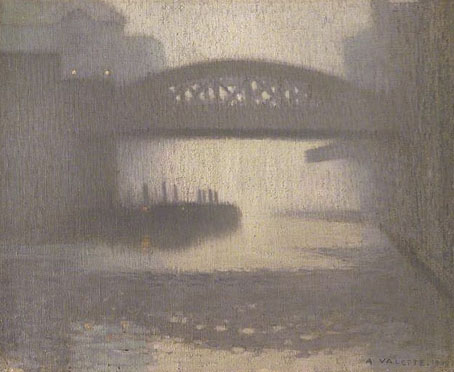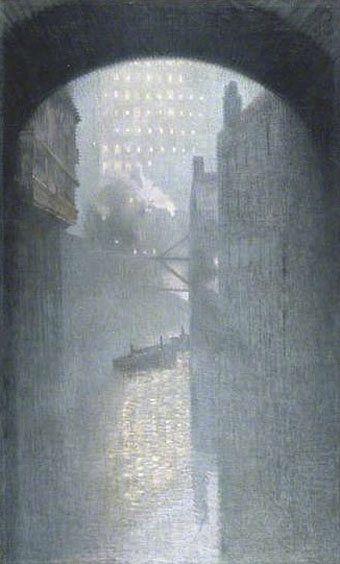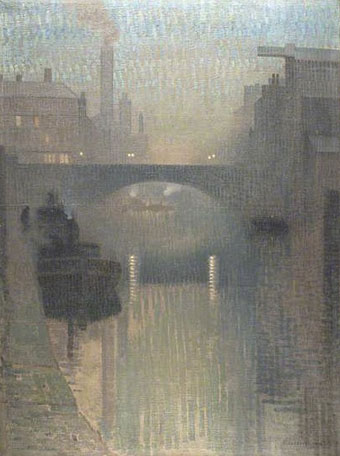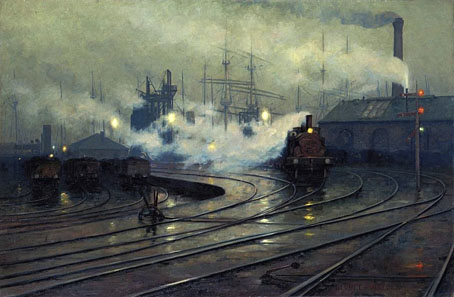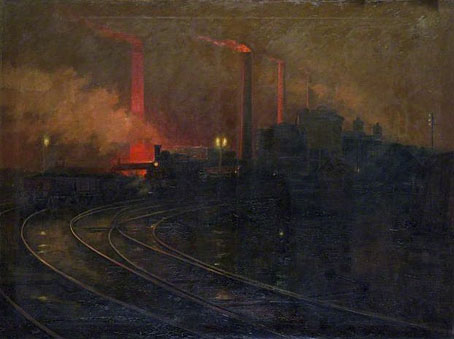Windsor Bridge on the Irwell (1909).
Adolphe Valette (1876–1942) was a contemporary of Lionel Walden, and where Walden was an American who spent some time painting views of Cardiff, Valette moved to Manchester in 1905 where he painted a series of celebrated views of the city. If it’s a commonplace that foreign eyes often see what locals ignore, this has certainly been the case in Manchester. Friedrich Engels catalogued the lethal living and working conditions of the city’s labourers in The Condition of the Working Class in England in 1845, and it took Valette to find a subject for his art in the city’s smogs and polluted atmospheres at a time when many British artists were still painting scenes from Tennyson or the tales of King Arthur.
India House, Manchester (1912).
Valette’s Manchester paintings now reside in the Manchester Art Gallery whose curators have always made much of his being “the Manchester Impressionist”. The term isn’t unjustified even though Impressionism was long gone by the time he began these paintings; there is something Monet-like to a few of them. The gallery contains a large amount of fairly typical Victorian art, including a couple of well-known Pre-Raphaelite pieces, so Valette’s work has always stood apart not only for its urban theme but for its looser technique. My favourite is the view of India House from the banks of the River Medlock. Many of the bridges and buildings in these paintings can be seen today, albeit cleaned and (in the case of India House) gentrified. Valette captures the final years of unrestrained industrial pollution when the air in Manchester, London and other cities was often as bad as it is in some parts of China today.
Bailey Bridge, Manchester (1912).

